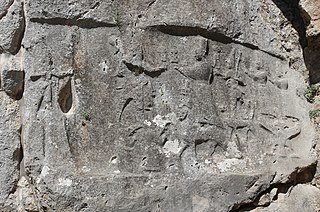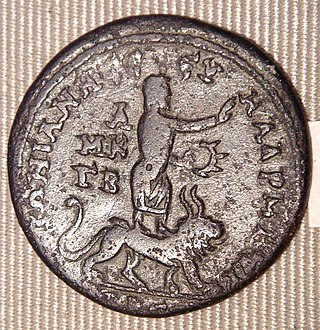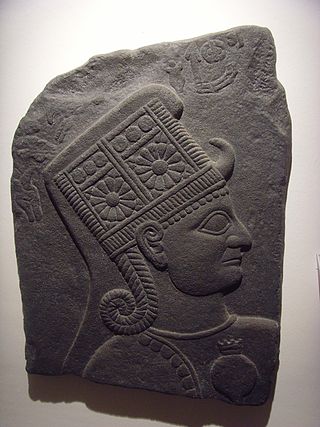Hittitology is the study of the Hittites, an ancient Anatolian people that established an empire around Hattusa in the 2nd millennium BCE. It combines aspects of the archaeology, history, philology, and art history of the Hittite civilisation.
A minor programme in Hittitology (B.A.) has recently been created at Philipps-Marburg University, Germany. [1]
A partial list of notable Hittite scholars includes:

The Ludwig Maximilian University of Munich is a public research university in Munich, Germany. Originally established as the University of Ingolstadt in 1472 by Duke Ludwig IX of Bavaria-Landshut, it is Germany's sixth-oldest university in continuous operation.

Diauehi (Georgian დიაოხი, Urartian Diauehi, Greek Taochoi, Armenian Tayk, possibly Assyrian Daiaeni) was a tribal union located in northeastern Anatolia, that was recorded in Assyrian and Urartian sources during the Iron Age. It is usually (though not always) identified with the earlier Daiaeni(Dayaeni), attested in the Yonjalu inscription of the Assyrian king Tiglath-Pileser I's third year (1118 BC) and in later records by Shalmaneser III (845 BC). While it is unknown what language(s) they spoke, they may have been speakers of a Kartvelian, Armenian, or Hurrian language.

Teshub was the Hurrian weather god, as well as the head of the Hurrian pantheon. The etymology of his name is uncertain, though it is agreed it can be classified as linguistically Hurrian. Both phonetic and logographic writings are attested. As a deity associated with the weather, Teshub could be portrayed both as destructive and protective. Individual weather phenomena, including winds, lightning, thunder and rain, could be described as his weapons. He was also believed to enable the growth of vegetation and create rivers and springs. His high position in Hurrian religion reflected the widespread importance of weather gods in northern Mesopotamia and nearby areas, where in contrast with the south agriculture relied primarily on rainfall rather than irrigation. It was believed that his authority extended to both mortal and other gods, both on earth and in heaven. However, the sea and the underworld were not under his control. Depictions of Teshub are rare, though it is agreed he was typically portrayed as an armed, bearded figure, sometimes holding a bundle of lightning. One such example is known from Yazılıkaya. In some cases, he was depicted driving in a chariot drawn by two sacred bulls.

Ḫepat was a goddess associated with Aleppo, originally worshiped in the north of modern Syria in the third millennium BCE. Her name is often presumed to be either a feminine nisba referring to her connection to this city, or alternatively a derivative of the root ḫbb, "to love". Her best attested role is that of the spouse of various weather gods. She was already associated with Adad in Ebla and Aleppo in the third millennium BCE, and in later times they are attested as a couple in cities such as Alalakh and Emar. In Hurrian religion she instead came to be linked with Teshub, which in the first millennium BCE led to the development of a tradition in which she was the spouse of his Luwian counterpart Tarḫunz. Associations between her and numerous other deities are described in Hurrian ritual texts, where she heads her own kaluti, a type of offering lists dedicated to the circle of a specific deity. She commonly appears in them alongside her children, Šarruma, Allanzu and Kunzišalli. Her divine attendant was the goddess Takitu. In Hittite sources, she could sometimes be recognized as the counterpart of the Sun goddess of Arinna, though their respective roles were distinct and most likely this theological conception only had limited recognition. In Ugarit the local goddess Pidray could be considered analogous to her instead.
Kumarbi, also known as Kumurwe, Kumarwi and Kumarma, was a Hurrian god. He held a senior position in the Hurrian pantheon, and was described as the "father of gods". He was portrayed as an old, deposed king of the gods, though this most likely did not reflect factual loss of the position of the head of the pantheon in Hurrian religion, but only a mythological narrative. It is often assumed that he was an agricultural deity, though this view is not universally accepted and the evidence is limited. He was also associated with prosperity. It was believed that he resided in the underworld.

Kušuḫ, also known under the name Umbu, was the god of the moon in Hurrian pantheon. He is attested in cuneiform texts from many sites, from Hattusa in modern Turkey, through Ugarit, Alalakh, Mari and other locations in Syria, to Nuzi, located near modern Kirkuk in Iraq, but known sources do not indicate that he was associated with a single city. His name might be derived from the toponym Kuzina, possibly the Hurrian name of Harran, a city in Upper Mesopotamia, but both this etymology and identification of this sparsely attested place name remain uncertain. He was a popular, commonly worshiped god, and many theophoric names invoking him are known. In addition to serving as a divine representation of the moon, he was also associated with oaths, oracles and pregnancy. Some aspects of his character were likely influenced by his Mesopotamian counterpart Sin, while he in turn was an influence on the Ugaritic god Yarikh and Luwian Arma.

Šauška (Shaushka), also called Šauša or Šawuška, was the highest ranked goddess in the Hurrian pantheon. She was associated with love and war, as well as with incantations and by extension with healing. While she was usually referred to as a goddess and with feminine titles, such as allai, references to masculine Šauška are also known. The Hurrians associated her with Nineveh, but she was also worshiped in many other centers associated with this culture, from Anatolian cities in Kizzuwatna, through Alalakh and Ugarit in Syria, to Nuzi and Ulamme in northeastern Mesopotamia. She was also worshiped in southern Mesopotamia, where she was introduced alongside a number of other foreign deities in the Ur III period. In this area, she came to be associated with Ishtar. At a later point in time, growing Hurrian influence on Hittite culture resulted in the adoption of Šauška into the Hittite state pantheon.
Aruna was the god of the sea in Hittite religion. His name is identical with the Hittite word for the sea, which could also refer to bodies of water, treated as numina rather than personified deities. His worship was not widespread, and most of the known attestations of it come exclusively from the southeast of Anatolia. He was celebrated in cities such as Ḫubešna and Tuwanuwa.

Šanta (Santa) was a god worshiped in Bronze Age Anatolia by Luwians and Hittites. It is presumed that he was regarded as a warlike deity, and that he could additionally be associated with plagues and possibly with the underworld, though the latter proposal is not universally accepted. In known texts he frequently appears alongside Iyarri, a deity of similar character. He is first attested in documents from Kanesh dated to the Old Assyrian period, and continues to appear in later treaties, ritual texts and theophoric names. He is also present in an offering lists from Emar written in Akkadian, though he did not belong to the local pantheon and rituals involving him were only performed on behalf of the Hittite administration by local inhabitants.

The Hurrian religion was the polytheistic religion of the Hurrians, a Bronze Age people of the Near East who chiefly inhabited the north of the Fertile Crescent. While the oldest evidence goes back to the third millennium BCE, it is best attested in cuneiform sources from the second millennium BCE written not only in the Hurrian language, but also Akkadian, Hittite and Ugaritic. It was shaped by the contacts between Hurrians and various cultures they coexisted with. As a result, the Hurrian pantheon included both natively Hurrian deities and those of foreign origin, adopted from Mesopotamian, Syrian, Anatolian and Elamite beliefs. The culture of the Hurrians were not entirely homogeneous, and different local religious traditions are documented in sources from Hurrian kingdoms such as Arrapha, Kizzuwatna and Mitanni, as well as from cities with sizeable Hurrian populations, such as Ugarit and Alalakh.

Tarḫunna or Tarḫuna/i was the Hittite weather god. He was also referred to as the "Weather god of Heaven" or the "Lord of the Land of Hatti".
Ali Maximilian Ertürk is a neuroscientist, inventor, and artist living in Munich, Germany. He is the director of a new Helmholtz Institute on Tissue Engineering and Regenerative Medicine (iTERM) in Munich since July 2019 and professor at the medical faculty. After his undergraduate study at Bilkent University in Ankara, he joined Max-Planck-Institute for Neurobiology for his PhD and Genentech Inc. for postdoctoral research.
Michèle Lowrie is the Andrew W. Mellon Distinguished Service Professor of Classics and the college at the University of Chicago. She is a specialist in Roman literature and political thought.

Kubaba was a goddess of uncertain origin worshiped in ancient Syria. Despite the similarity of her name to these of legendary queen Kubaba of Kish and Phrygian Cybele, she is considered a distinct figure from them both. Her character is poorly known. Multiple local traditions associating her with other deities existed, and they cannot necessarily be harmonized with each other. She is first documented in texts from Kanesh and Alalakh, thoug her main cult center was Carchemish. She was among the deities worshiped in northern Syria who were incorporated into Hurrian religion, and in Hurrian context she occurs in some of the Ugaritic texts. She was also incorporated into Hittite religion through Hurrian intermediaties. In the first millennium BCE she was worshiped by Luwians, Arameans and Lydians, and references to her can be found in a number of Greek texts.
Iyarri, also known as Yarri, was a god worshiped by Hittites and Luwians in Anatolia in the Bronze Age. He was associated with plague and war, and was portrayed as an archer whose arrows inflicted people with illnesses. While it is generally assumed that Iyarri was male, a female form of this deity is mentioned in a single text. It has been proposed that Iyarri might have developed from the Mesopotamian god Erra, or that he was influenced by him. A different proposal considers his name a cognate of that of Greek Ares, though the evidence in favor of this view is not conclusive.
Ziparwa, originally known as Zaparwa, was the head of the pantheon of the Palaians, inhabitants of a region of northern Anatolia known as Pala in the Bronze Age. It is often assumed that he was a weather god in origin, though he was also associated with vegetation. Information about the worship of Ziparwa comes exclusively from Hittite texts, though some of them indicate that formulas in Palaic were used during festivals dedicated to him held in Hittite cities such as Hattusa.
Iyaya was a Hittite and Luwian goddess. Her functions remain uncertain, though it has been suggested she was associated with water or more broadly with nature. She might have been associated with the god Šanta, though the available evidence is limited. Her main cult centers were Lapana and Tiura, though she was also worshiped in other cities.
Pišaišapḫi was a Hurrian mountain god. His name was derived from that of the associated mountain, Pišaiša, which was most likely located next the Mediterranean coast. He is attested in Hurrian and Hittite ritual texts from cities such as Hattusa, Šapinuwa and Ugarit. A Hittite literary text known as Myth of Pišaiša is focused on him, though its origin and the reading of the names of other deities who play roles in it remains a matter of debate among researchers.
{{cite web}}: Missing or empty |title= (help)